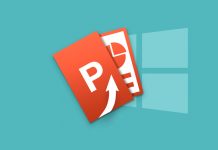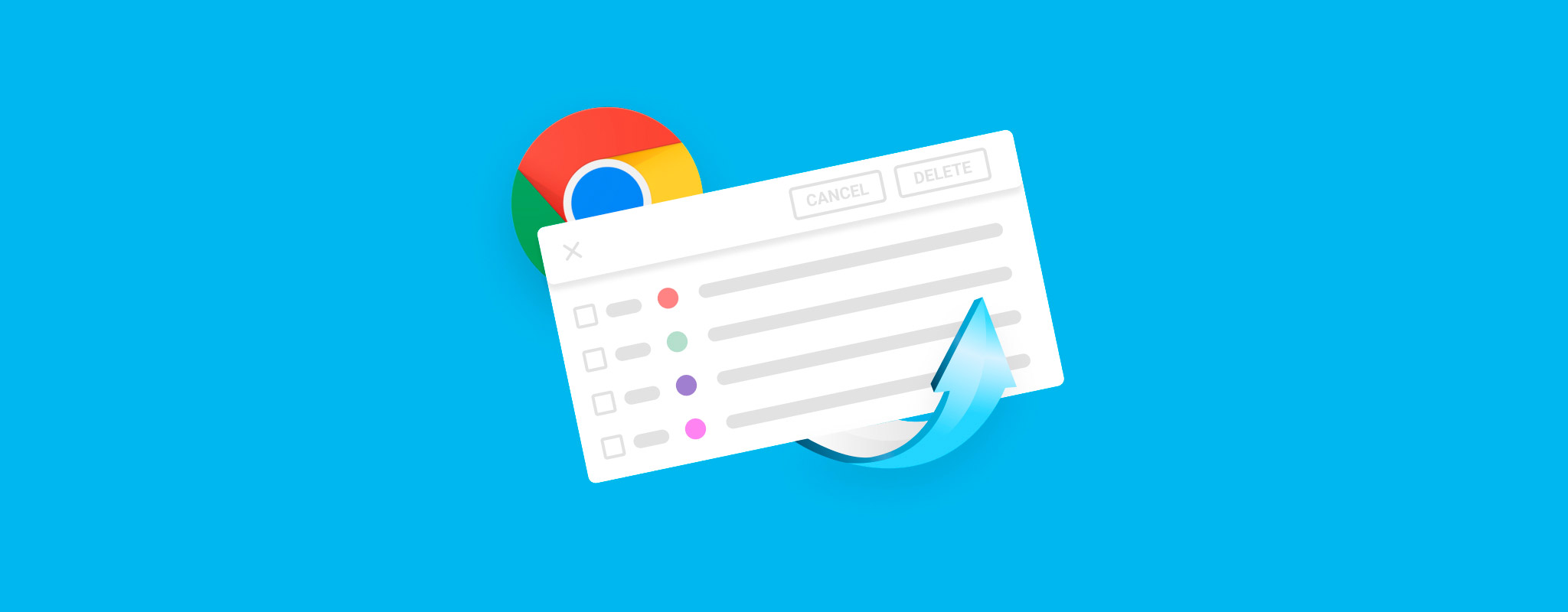
Google Chrome gives you the option of viewing your browsing history. It tracks what websites you have visited on what dates and allows you to return to them if you forgot to save them for later. But, what happens if your browser history is lost or deleted before you get a chance to bookmark that important website?
Because it’s stored locally, there’s still a chance your browsing history can be restored, even if it was manually cleared. We’re going to look at different ways you can recover deleted Chrome history.
| Method | Description |
| 💻 Data recovery software | Restore files deleted from Profile Path directory. |
| 🪟 Windows System Restore | Restore to a point in time where your history is present in Google Chrome. |
| ⏳ Previous Version | Go to Local folder and check the File History. |
Table of Contents
How to View Browsing History in Google Chrome
Google has made it super easy to access your search history. You can view browsing history in Chrome using a simple key combination while Chrome is open. This will take you directly to the history screen.
- Make sure that Google Chrome is the active window. Press CTRL + H on your keyboard.

- A new tab will appear that shows your full browsing history.

Alternatively, you can access your browsing history through the Google Chrome browser using your mouse.
- Click on the three dots at the top right of your browser window.
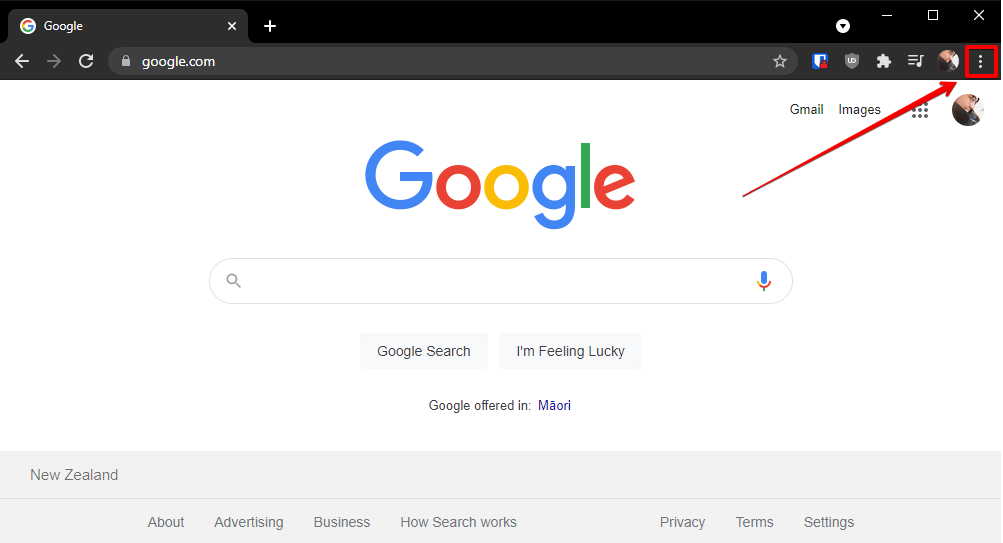
- Hover over History. This will give you a brief overview of your recent browsing history. Click on History to view the full history.
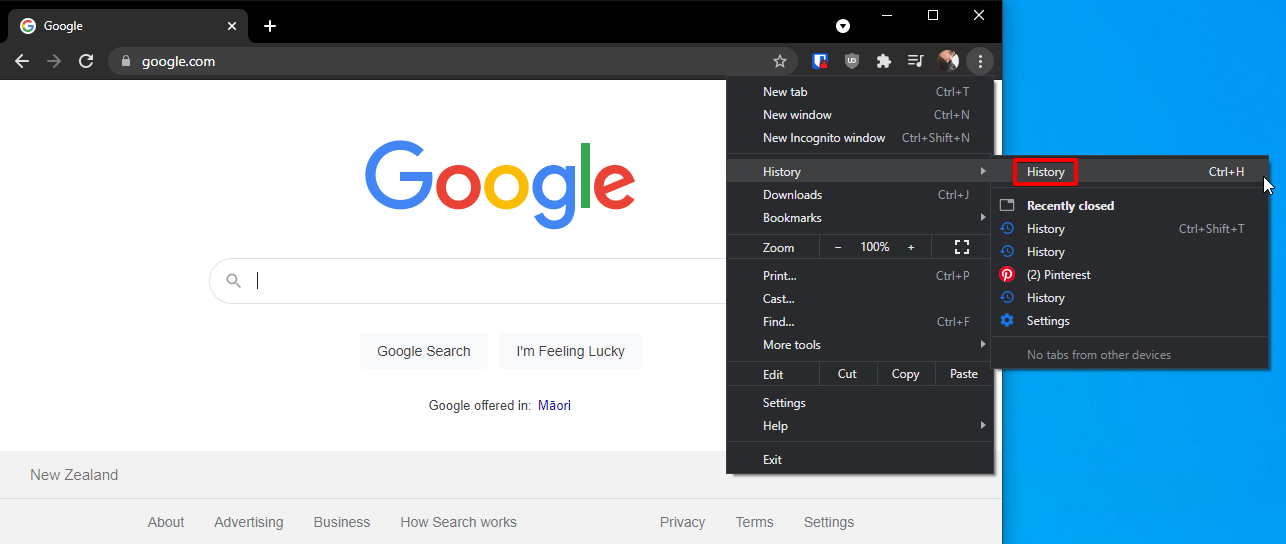
No matter which method you use, you’ll be taken to the same History screen. This same area will be used when viewing deleted history once it is restored.
How to Search for Chrome History
If you’re looking for a particular website, the below methods can be used to search your Google Chrome history for the exact entry.
My Google Activity
Aside from the History interface, you can use Google My Activity to search through previous websites you have visited, as well as activity relating to other Google services.
- Open Google Chrome and go to myactivity.google.com/myactivity. Sign in if necessary.

- Either scroll down and review the entirety of your history, or use the search box to find what you’re looking for.
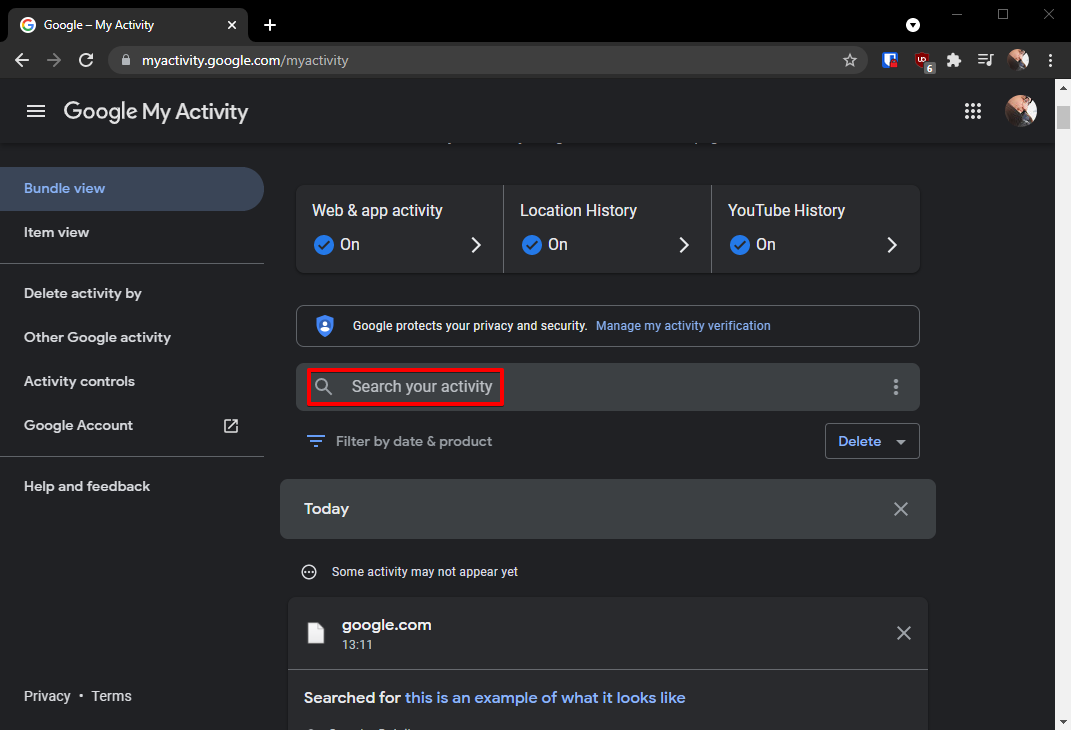
DNS Cache
DNS (Domain Name System) is responsible for finding and storing website addresses in correlation to their IP address. Without it, you’d need to remember the IP address of every website you connect to. Your DNS Cache stores information about the sites you have visited so that they’re easier to visit next time.
Using the DNS Cache isn’t a reliable way to recover Chrome history because it holds website data from all internet connected apps, not just Chrome. Also, each time your computer is restarted, this cache is wiped.
- Press Windows Key + R on your keyboard. Type CMD and press Enter.
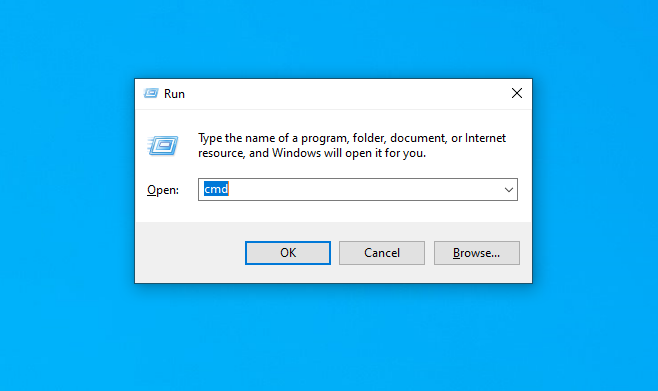
- Type
ipconfig /displaydnsand press Enter.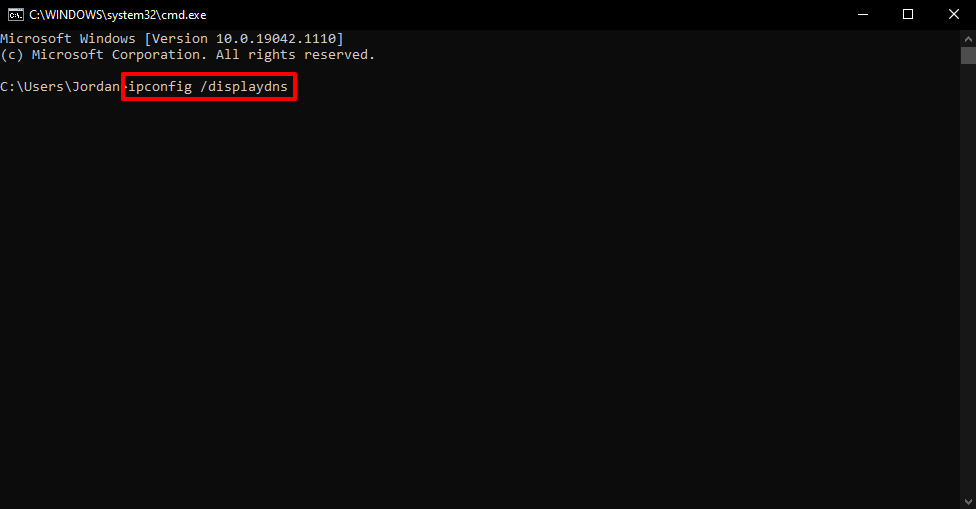
- Look through the results to find your website.
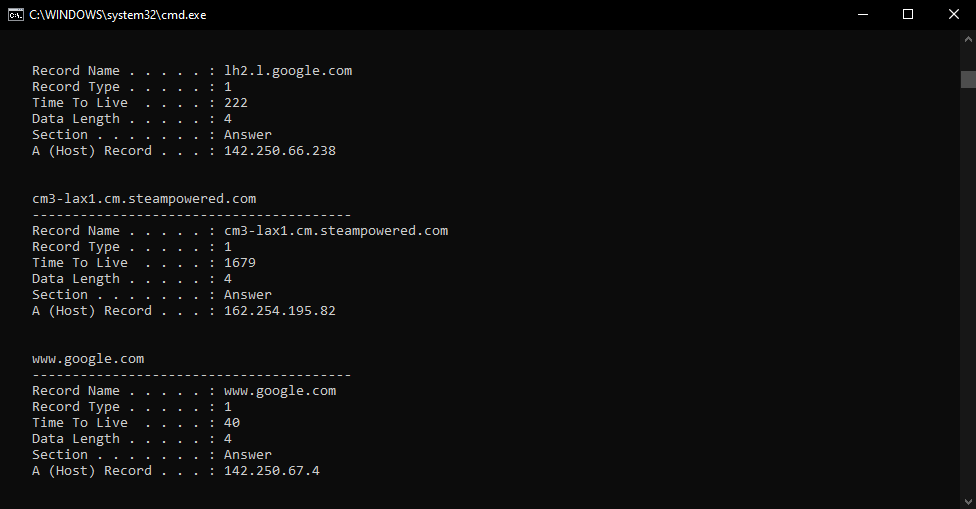
How to Recover Deleted History on Chrome
Your Google Chrome history is stored locally on your computer. When you clear your history in Google Chrome, this file is wiped clean. The same happens when you delete the file from your computer directly, Google Chrome will create a new, blank history file.
Since the file is stored locally, this enables you to find deleted history on Google Chrome using one of several methods. Below you’ll find how to recover deleted history on chrome.
Method 1:Restore Using Data Recovery Software
Data recovery software has many applications, one of them being the ability to restore Chrome history. Disk Drill is a powerful data solution that can retrieve lost or deleted files from your drive. Because of its proven reliability, it’s a great tool for recovering deleted history.
Let’s look at how you can use data recovery software to retrieve deleted history on Chrome:
- Open Google Chrome and enter chrome://version/ in your URL bar and press Enter. Take note of your Profile Path as this will be important in finding the correct history file.

- Download Disk Drill and install it. When installed, open it.

- Select the drive where Google Chrome is installed and click Search for lost data.
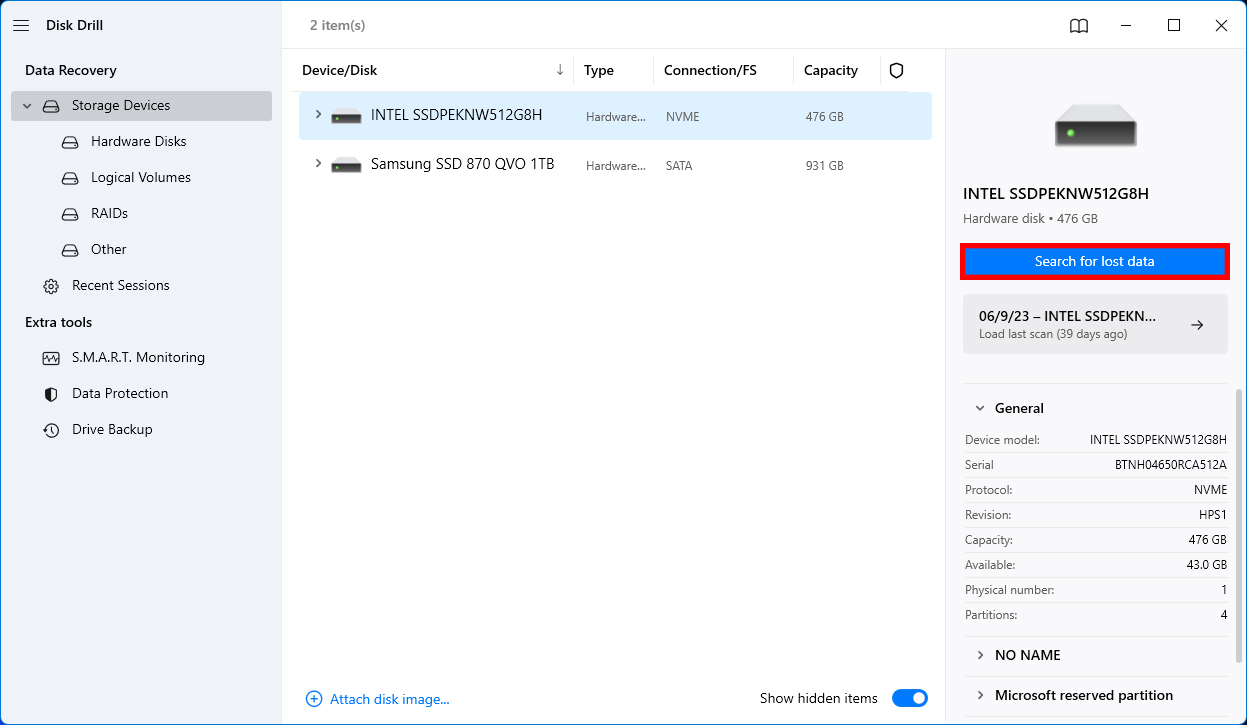
- Click Review found items.

- Use the collapsable menus to navigate to the location specified in the Profile Path. In my case, it’s C:\Users\Jordan\AppData\Local\Google\Chrome\User Data\Profile 1. Add a check to the tickbox for History. Click Recover.
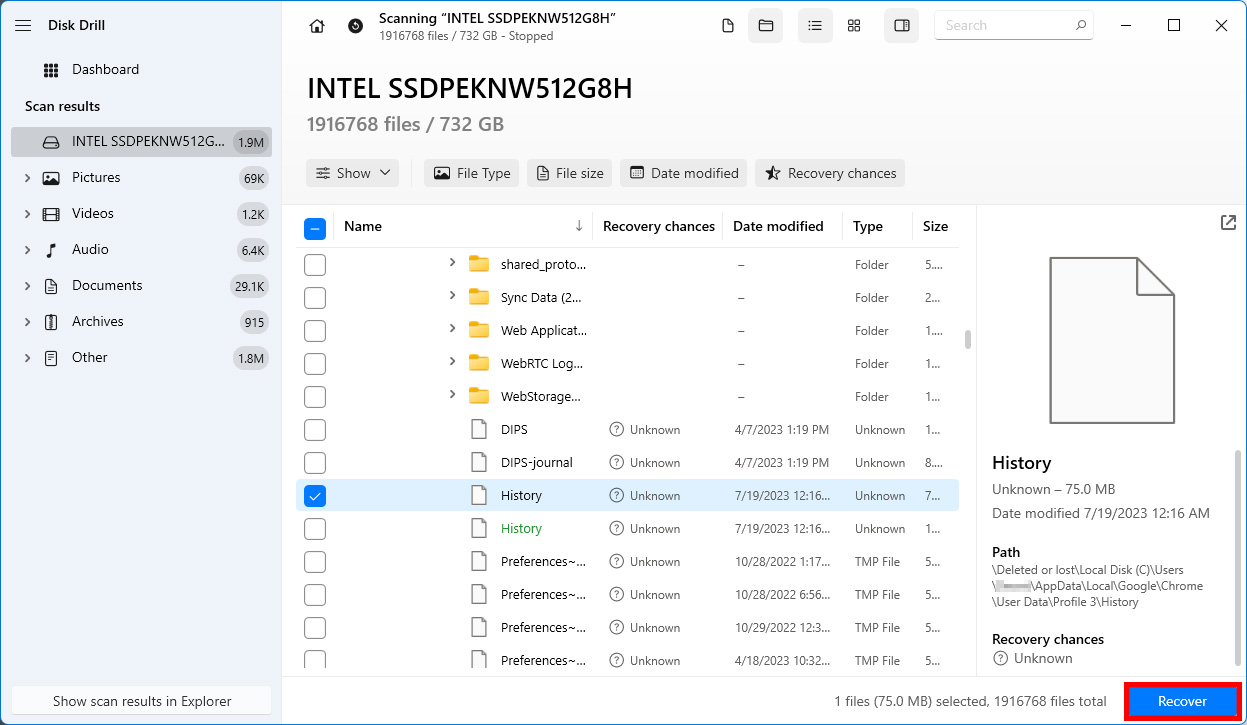
- Specify where you want the file restored to. You can choose a temporary location before moving the History file to the appropriate Profile Path directory. Press Next.
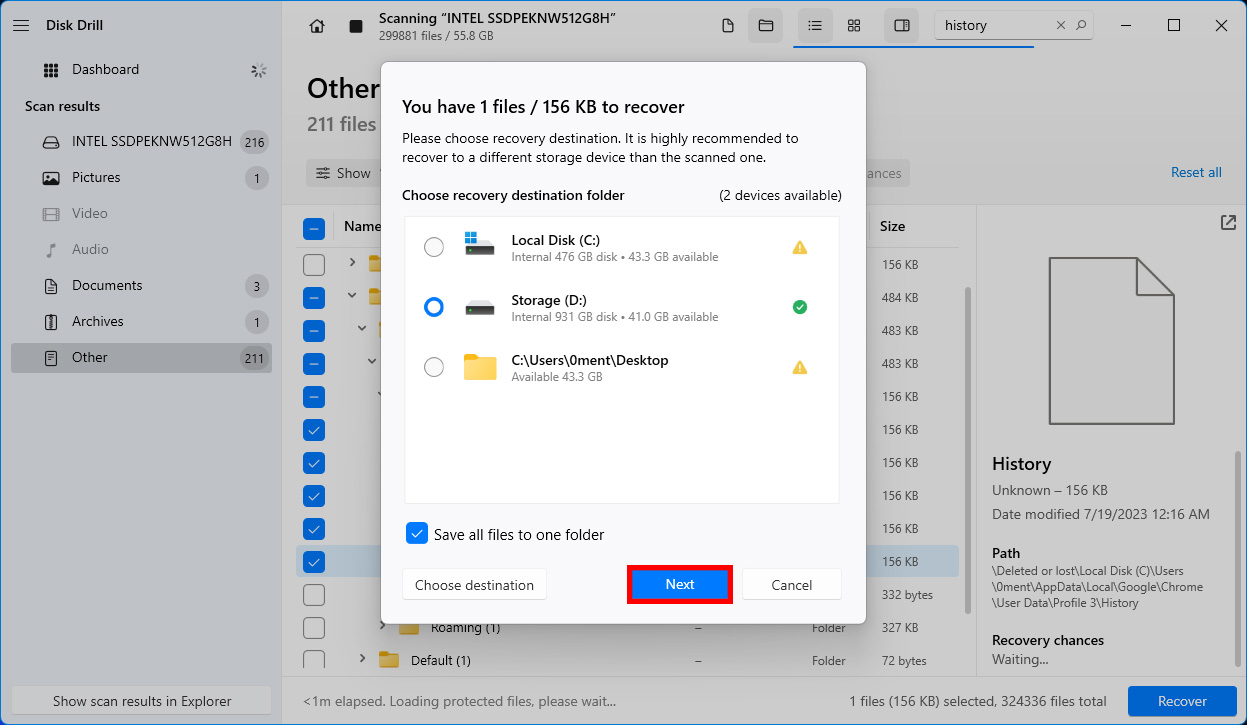
Method 2:Restore From a Backup (System Restore)
System Restore creates automatic restore points automatically at points it deems necessary, in addition to manual restore points. There’s a chance you can restore to a point in time where you can view deleted history on Google Chrome.
Any applications or drivers that were installed after the restore point was made may be uninstalled.
- Press Windows Key + S and search system restore. Click on Create a restore point.
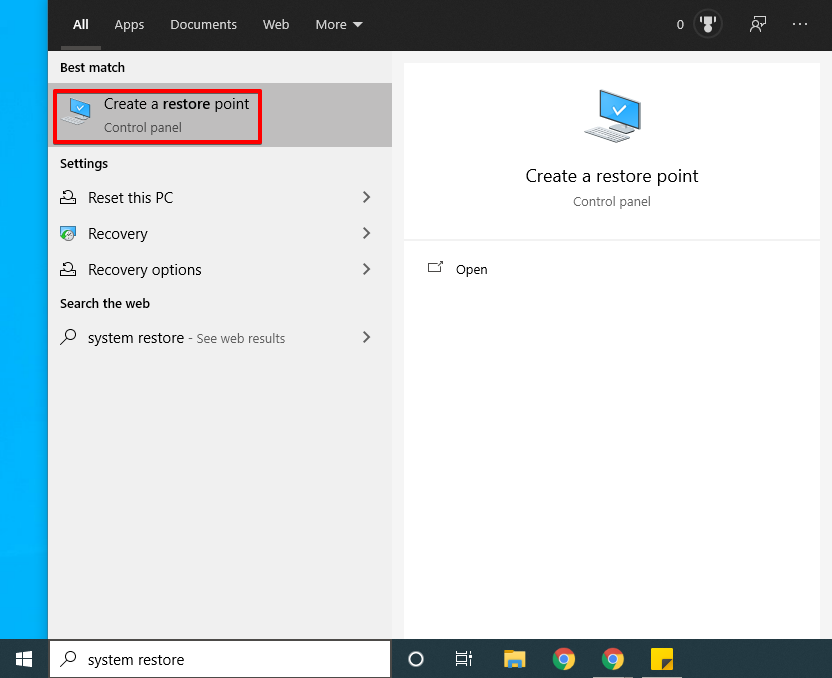
- Click System Restore.
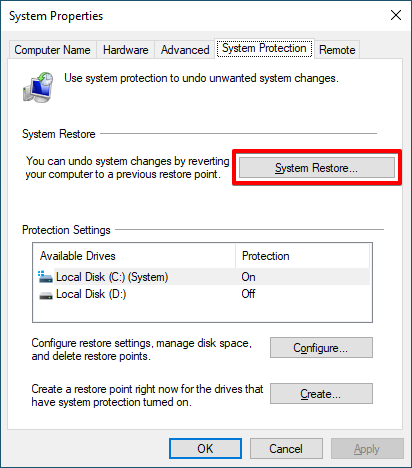
- Click Next.

- Select a restore point that’s dated before your Chrome history was lost or deleted. Click Next.

- Finally, click Finish. Your computer will restart to apply these changes.
If you changed your Windows password during the time since the restore point was made, you should first make a password reset disk.
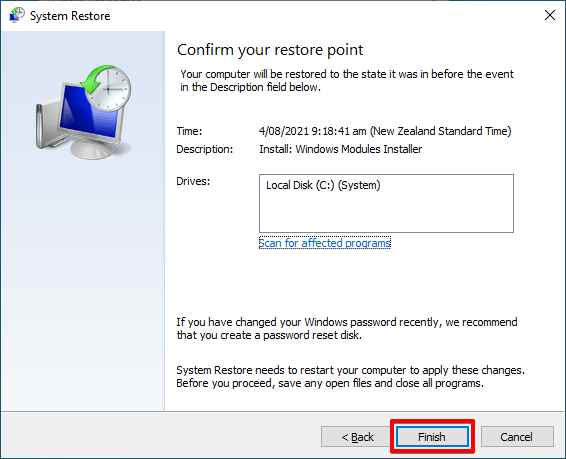
After you’ve restored to a previous point, confirm that you can view deleted history on Chrome.
Method 3:Restore From a Previous Version
You can restore deleted browsing history on Google Chrome if you’ve previously made a backup using File History. File History, once configured, makes periodic backups of your files and allows you to restore them to a previous version, depending on the version of the file you want.
Use the following steps to restore deleted files from a Previous Version:
- Open Windows Explorer and go to C:\Users\<USERNAME>\AppData\Local.
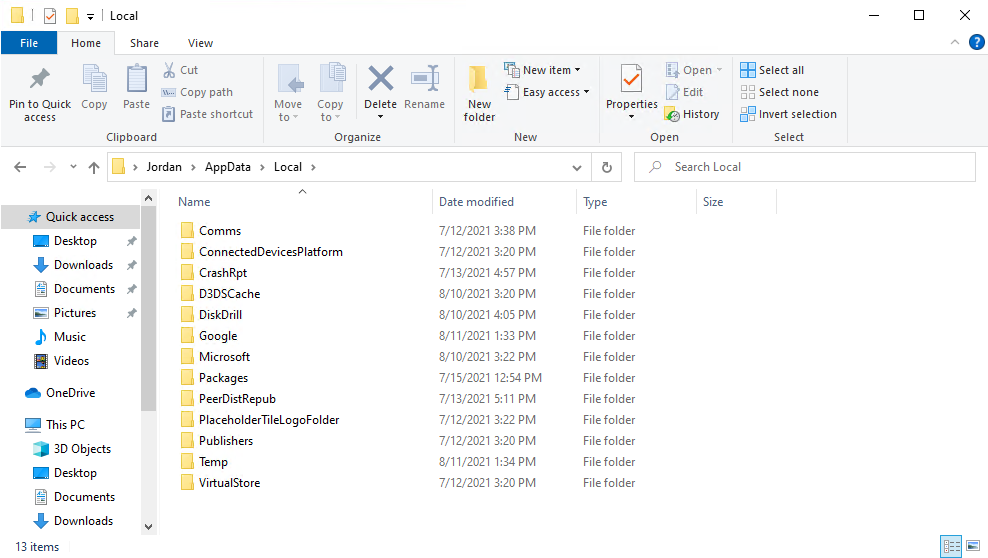
- Right-click the Google folder and select Properties.
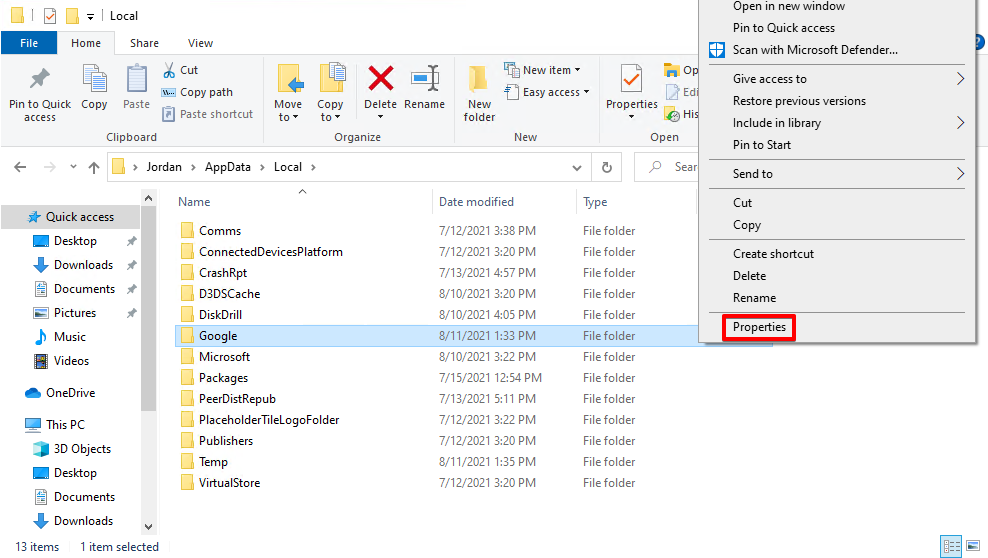
- Go to the Previous Versions tab. This will display all of the backed up versions of the Google folder.

- Choose a version that is dated before the history was deleted and click Restore.
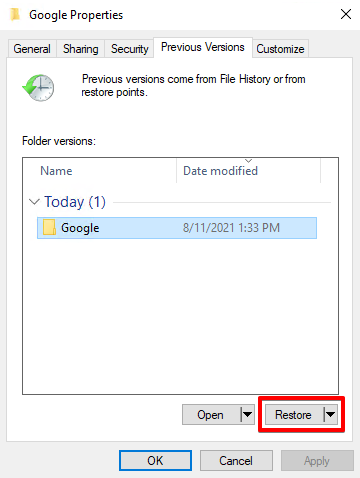
Once finished, go to the History section and you will see deleted history on Chrome.
FAQ
- Go to chrome://version/ and copy the Profile Path that you see.
- Press Windows Key + R, paste in the Profile Path and press Enter.
- Scroll down until you find the History file. Right-click it, hold Shift and click Delete.
- When asked to confirm, click Yes.
- Go to chrome://version/ and make note of the Profile Path.
- Open Windows Explorer and go to C:\Users\Jordan\AppData\Local\Google\Chrome\User Data.
- Access the folder that correlates to the Profile Path you found earlier. Inside you will find a file called History.




